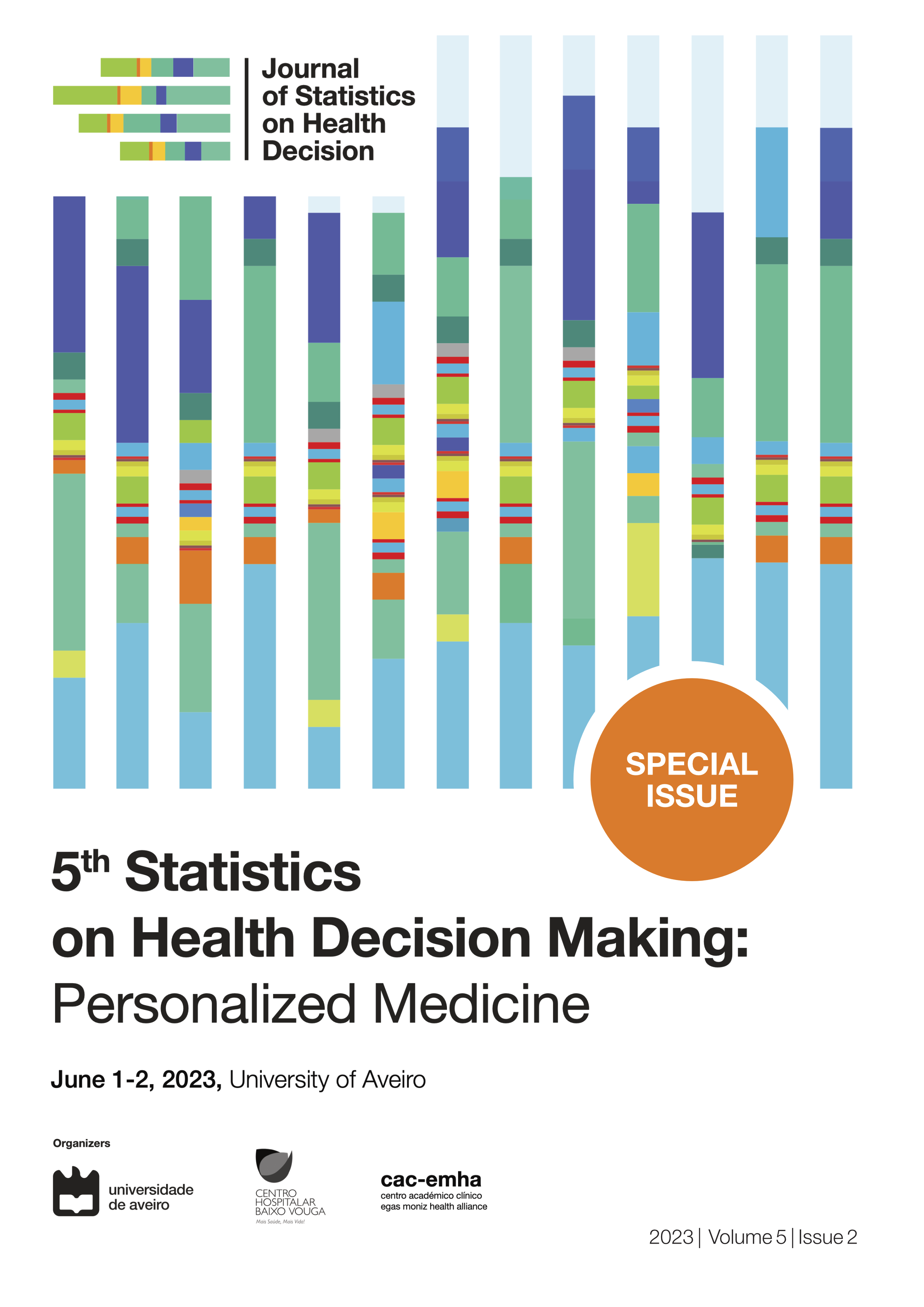The dimension reduction power of ClustOfVar: application of the variable cluster analysis technique in a mixed data health database
Abstract
Background/Objective: Technological evolution is increasingly making real the elements necessary for the daily practice of personalized medicine, an improved vision of health care whose decisions regarding prognosis, diagnosis and therapeutic strategies depend on the patient's various characteristics. This approach leads to the collection and use of information that is broad in extension and complexity, for which dimensionality reduction techniques are imperative, in order to simplify and understand it. This paper aims to show the value of the ClustOfVar technique, a variable clustering technique capable of dealing with mixed data, resulting in data reduction. Through its hierarchical and non-hierarchical approaches, it replaces sample variables with representative synthetic variables. This dimensional reduction can be extended to individuals by applying Ward's method.
Methods: The cleaning process of anthropometric, obstetric, vital signs and pubertal status data from 700 participants of the Generation XXI cohort and/or their mothers led to variables being removed (181 down to 105 variables, 82 quantitative and 23 qualitative). Then, the hierarchical technique of the ClustOfVar package was applied, which started by building a hierarchy of variables. The optimal number of clusters was then determined, considering the aggregation level plot and the bootstrap methodology, and each cluster was characterized. The partition into clusters was then tried with the non-hierarchical process. Once the partition was defined, Ward's method was applied, dividing the participants into clusters. We finished with their description according to the synthetic variables.
Results: The partition in 8 clusters of variables suggested by the hierarchical technique was chosen, with the first and third cluster being filled mainly by maternal characteristics (relating mainly to menstruation and physical measurements, respectively). While cluster 2 mixes maternal and individual characteristics, cluster 4 contains only patient variables at birth. Cluster 5 is the most diverse, with anthropometric and related measurements of vital signs and blood macromolecules. Cluster 6 has total mass and fat measurements. Finally, cluster 7 is related to pubertal status variables, and cluster 8 includes cholesterol variables. The clustering of individuals results in the creation of specific profiles for each of the 8 clusters of individuals.
Conclusions: The ClustOfVar technique accomplishes a data transformation relevant to the dispersion of personalized medicine. However, it lacks the ability to deal with high proportions of missing data and its bootstrap process is very time-consuming.
Copyright (c) 2023 Natacha Oliveira, Milton Severo

This work is licensed under a Creative Commons Attribution 4.0 International License.
When submitting an article to the Journal of Statistics on Health Decision (JSHD), authors certify the following clauses:
- Originality and single submission – The contents presented in the article have not been published previously in whole or in part, and were not submitted or are not under active consideration elsewhere prior JSHD decision. The article is authentic and does not contain plagiarism.
- Authorship – All authors reviewed the article, agreed with its content, and agreed to its submission to the JSHD. All the authorship criteria stated by The International Committee of Medical Journal Editors Guidelines were met.
- Conflicts of interest – Any conflict of interests were declared. If authors have no declaration, it should be written (in the acknowledgements section): “The authors declare no conflict of interests”.
- Ethics committee and informed consent (if applicable) – The current research was approved by an independent ethics committee and subjects gave their informed consent before they were enrolled in the study.
- And authors agree to the Open Access license agreement of the Journal of Statistics on Health Decision, stated bellow.








